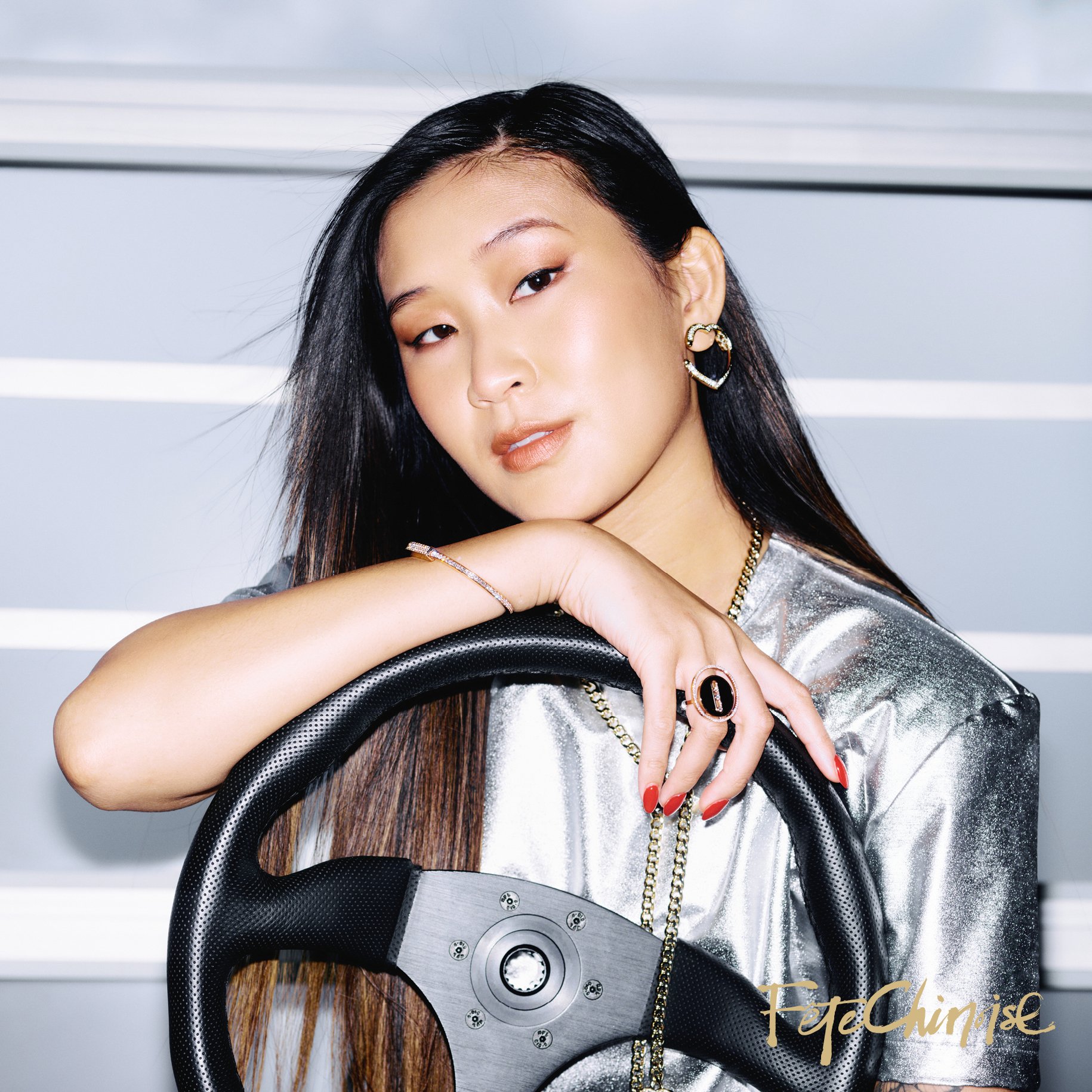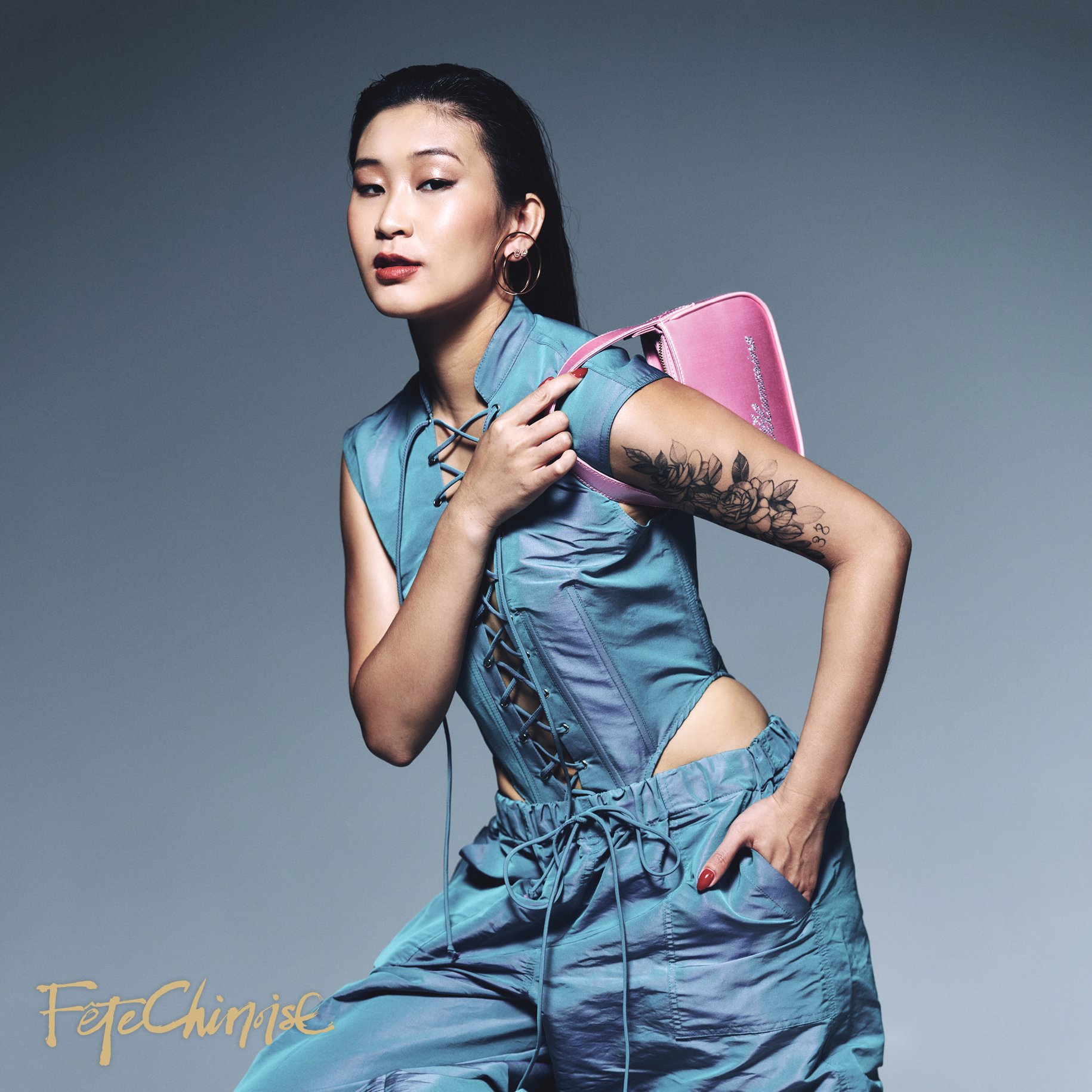When the green flag drops at the top of a race, Samantha Tan feels the adrenaline coursing through her veins. The 26-year-old motorsport professional knows the course like the back of her hand and at this point, any doubts she might have had about how to navigate it have vanished. Her focus becomes laser-sharp as she revs to the finish line.
“Racing is one of the few sports where men and women can compete on a completely equal footing,” she says. “It’s 85 percent mental.”
The physical side of racing can be just as intense.
When racing at high speeds, G-force — a measure of gravitational pull that pushes back onto the body — comes into play. You’re moving fast but at the same time, you feel as if you are being pinned down by up to three times your body weight. “Over a two-hour stint,” Tan says, “I lose two pounds of water weight each race.”

加拿大華裔女車手宋心心(Samantha Tan),年僅26歲,已經擁有以自己命名的車隊,而且位列多個國際大賽的「第一」:史上首名加拿大華人贏得「杜拜24小時耐力賽」冠軍、完成了24H GT4系列賽,亦是首位贏得大型拉力賽冠軍的亞裔女性。這位風華正茂的女生,談及職業及成長的經過,不驕不躁不卑不亢,顯露出非凡智慧;無論在賽事中或人生,同樣目標清晰,全力前進。
Welcome to the wild, wild world of professional endurance racing, where Tan thrives as she drives to the finish line. As one of the sport’s newer and younger faces, Tan — a proud Chinese-Canadian athlete — last year became the first Asian woman to win a major endurance racing championship. She hopes to improve her standing this coming year, now that she’s in charge of hiring other pro athletes and team members for her Samantha Tan Racing team, a newcomer to the international racing circuit now looking to make a name for itself on the world stage.
Tan is determined to drive to the top, a goal instilled in her by her Chinese parents.


Like many children of immigrants, while growing up in Canada, Tan felt a responsibility to acknowledge the sacrifices made by her parents in support of giving her a better life. Born respectively in the Philippines and Malaysia, her father and mother gave all they had for Tan to learn as much as she could. At a young age, Tan took piano lessons and endured the strenuous process of practicing to be able to perform at recitals, which she credits for developing the resilience she needs for racing.
Her love of fast cars comes from her dad, a huge Formula 1 fan. When she was just 14, he enrolled her in a performance driving academy. He then had trouble getting her out of the car. She was hooked.
Samantha自小在賽車迷父親薰陶,跟隨他出席大小汽車聚會、觀看賽事。14歲那年,她終於在一次駕駛體驗活動中一嘗在圈內風馳的快感。那速度、重力、前所未有的刺激,令她決心要成為一名賽車手,尚在求學階段,已積極投入訓練、比賽。「那時我仍在大學,主修經濟學、副修人類學及法律;終日為参加賽事馬不停蹄,實在非常瘋狂。比賽都是在星期四、星期日舉行,我記得好幾次完成賽事後要即晚飛返校園,趕上星期一早上的課堂。」

直至第一次在賽事中遇上意外,痛定思痛,令她重新審視自己的生活與時間調配。為了理想,她毅然放棄了所有社交活動;當同輩們個個享受大學生多姿多采的生活時,她心無旁騖,將全副精力集中於學業和訓練中。「從那時起我下定決心,認清以賽車作為職業的目標。」
“We went on a hot lap and all the intense braking, acceleration and G-forces just absolutely blew me away.” Tan says. “As soon as I stepped out of the car, I was like, I wanna be a race-car driver.”
While an Asian woman behind the wheel of one of the fastest cars in the world is still extremely rare, her father never balked. He’s always been her biggest supporter, boosting her confidence and encouraging her to participate in different training programs and races to feed her need for speed. But while he believed in her, Tan experienced doubts about her own ability. While she had a great passion for the racetrack, she had difficulty navigating the sport. Being one of only a handful of female drivers participating in the sport, Tan often felt that she did fit in. “I was one of the very few girls in racing and did not feel like I belonged at times due to my late start.”

賽車手的訓練,比任何運動都要嚴格:車子在高速行駛時,需要保持頭腦冷靜;控制軚盤、油門及剎車所需的力度、急速轉彎時身體所承受的向心力;另外,車艙溫度亦會隨速度急速上升,再加身上所穿的防火內外衣服、手套、頭盔,悶熱程度難以想像。「比賽時駕駛艙內高溫至百多度華氏。歷時兩小時的比賽後,我的身體會整整去掉兩磅多的水分,是很消耗精神體力的。」
每次賽事前,Samantha會花大量時間將賽道、路線在腦海中重現一次,當中包括不斷翻看Youtube片段、想像自己在賽道上兜彎。平日亦會時刻自律,保持水分攝取、充足睡眠、體能訓練、帶氧練習、肌肉控制、持久忍耐力⋯⋯聽着Samantha列舉各樣訓練與準備,也不得不感到佩服。
She left home for university to study economics, choosing to keep racing as a hobby. But as much as she kept her head down and got good grades, Tan kept on longing for the racetrack. She learned to balance the demands of academe with her love of racing, sacrificing a social life to do so. It was a tough period. But for Tan, it was the moment she felt that she truly grew up. She knew exactly what she wanted to pursue in life and this gave her a great feeling of independence. Thankfully, her parents were accepting of this important life decision — with some reservations. “My mom is supportive,” Tan says. “But she’s not really into cars and she always gets very worried whenever I go off to race. She’d tell my dad, ‘You only have one daughter!’ Which is understandable. I’ve been so blessed to have parents that support me in pursuing this very non-traditional career path.”

賽車場上,那怕有千萬分之一的差池,也會影響表現,甚至出現意外。無論任何時刻,身心都要保持最佳狀態。比賽場上,Samantha有一套調整心神的習慣。「我會找個安靜的地方,掛上耳筒,去除一切雜念。我會提醒自己:『這是你應得的機會、你有技術、你會順利的。』然後,當我戴上頭盔,坐在車中等待出發時,會深深吸氣、聆聽自己的心跳聲,進入最專注的狀態。」
她坦言自己亦會有困惑的時刻。「即使是現在,但仍不時會問自己:我夠資格嗎?但我會調整思緒,提醒自己一切都是靠努力所得的,是應得的。」遇到不順利、失意時,她會回想年輕時的自己,重提初心及一直的堅持。
Tan has since won multiple titles in world-stage competition. But she’s also hit devastating lows, including a recent spell of bad luck in her last three races, where she faced mechanical issues, and was crashed into. These challenges tested her self-confidence. “Like, am I good enough? Do I deserve to be here? Even with my accomplishments, I can be very hard on myself.”

賽車界中男女比例失衡,也是Samantha長期面對的挑戰。「作為圍場內的少數,很自然要承受額外的目光及壓力,覺得凡事都要完美,不能出錯。一有問題,大眾很習慣指責『那個女人』,然而,同樣問題出現在白人男人上,不會有人這樣說。」剛開始賽車時,她是唯一的女車手;現在女車手多了三、四倍,真實數字也只是在200多個男車手中出現了4、5個女車手。「業界進步了,增設了不少專為培育女車手的訓練及比賽項目,也多了女性加入車隊、維修及管理等不同岡位,這些都是我樂見的,但我相信仍然有很多進步空間。」
賽車中85%是靠智力取勝,是少數男女可以完全平等地同場競賽的項目。然而因為傳統的性別定形,影響了女性在賽車界的發展。Samantha憶起自己在起步之初,沒有前人可以借鏡,唯有靠觀看其他領域的成功亞洲女性領袖的分享,獲得啟蒙。她同樣希望自己的成功能鼓勵後輩。
Pushing her forward is the realization that in the sport of race-car driving she’s a trailblazer. There just aren’t that many female race-car drivers out there. Rarer still are female drivers who are also Asian. Tan feels it as a huge responsibility. “As one of the very few female drivers, I feel this pressure to perform, and to be the best role model for others like me.” Her mantra is, if you can see it, you can believe it. Even though she did not see Asian female race-car drivers while growing up, she hopes to give future generations the momentum to go far in an industry that has been frequently criticized for being non-inclusive.

That ambition was fuelled by episodes of anti-Asian aggression she (and many around the world) witnessed during the pandemic. Asian women, including the elderly, living in the Asian diaspora became targets of hate and violent attacks, some of them fatal. “I had fear,” Tan says.
“But amidst all the turmoil, I found solace in the resilience and strength of my community. I saw Asian women stepping up as leaders and changemakers and challenging these harmful narratives. For me, it was a very powerful reminder that we are more than the sum of our parts and that our voices and stories deserve to be heard. I’d like to think that I’m now one of those leaders.
「因為看見了相類似的人的成功榜樣,您會得到肯定和歸屬感,相信自己有日亦可成為他/她。另外,有了成功的例子,便可消除傳統原有的誤解、歧視或定形。」她表示在爭取個人成就之餘,未來希望參與更多培訓年青女車手的工作,同時繼續利用自己的種族、性別及影響力,因為她相信,只有見到更多亞洲女性取得成功、優秀的成績,才能影響其他人及整個社會的觀感、印象及定位。

